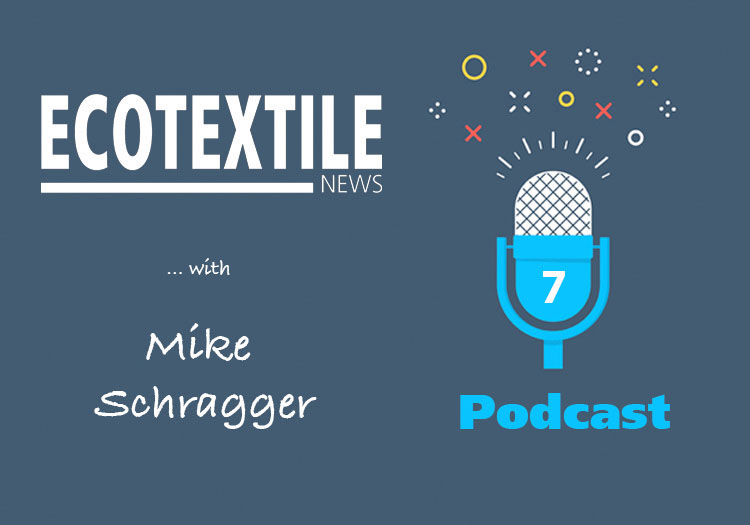WAKEFIELD – In this expansive, long-format interview with Jason Kibbey, CEO of the Sustainable Apparel Coalition (SAC), Mike Schragger asks him to reflect on his 8 years at the helm of the SAC and his assessment of the organisation to date.
Prepare yourself for some candid views on the current state of the industry and a warning – which is become often repeated – that a race towards a ‘circular’ apparel sector could become a distraction if it prevents the fashion industry from investing in proven solutions that can be implemented today.
Listen to the full podcast here
As the head of one of the most important environmental trade organisations to emerge since Ecotextile News was first launched in 2006, Jason Kibbey has headed up the Sustainable Apparel Coalition since it was created back in 2011.
Kibbey has form prior to that though. And in this podcast he chats openly for 60 minutes about how he feels the industry has progressed over the past 8 years and talks about life before the SAC at both Patagonia and PACT Apparel, “which was one of the first companies to have garments printed with the name of the factory they were made in.”
With a background in environmental projects, he tells Mike Schragger how he gravitated toward the apparel sector via a Patagonia project saying: “Clothes are essentially an expression of who we are, so if we really believe in a different way of how we interact with the planet, and with each other, then I believe clothes are a great way to express this – and it (responsible purchasing) allows people to do something about it.”
This view also extends to social issues, where he notes how the whole sweatshop debate did not emerge from the electronics and automotive sectors – even though workers have been exploited here. “No, it came to prominence in the clothing industry, not because it’s the only industry that has problems, but because it’s an industry that people really care about – it’s an expression of their values.”
Kibbey reveals how the Higg Index – the SAC suite of tools used to measure the environmental impact of the textile supply chain has garnered interest from other industry sectors such as the automotive, pet-food, toy sector as well as extractive industries (mining).
“The Higg Index could provide a base platform for work across other consumer goods sectors,” he says, “some are already adapting our tools to their industry.”
Listen to the full podcast here
Talking about new ‘circular’ business models for the apparel sector, Kibbey agrees with Linda Greer in our previous podcast.
“On the one hand new technologies and new business models may be a promise for the future, but under our existing models today, we have to be honest and say that more and more consumption, leads to more and more impact. We have to be realistic that our current (production and consumption) models are not necessarily leading to more sustainable outcomes.
“There is often a conversation that the ‘circular fairy’ is going to solve everything. We need to be a lot more realistic about that … I do think we see in this industry that sometimes we sacrifice responsibility today, for the hopes of a better tomorrow.”
Kibbey expects a mechanism to deliver consumer-facing environmental scores for clothing “within the next five years,” saying it’s “absolutely critical,” this happens.
We’d highly recommend that as our industry winds down towards the Festive Season, take some time out, pour yourself a glass of your favourite tipple, kick off your shoes and have a listen to this podcast when you have a quiet moment – perhaps even if you are at work!



